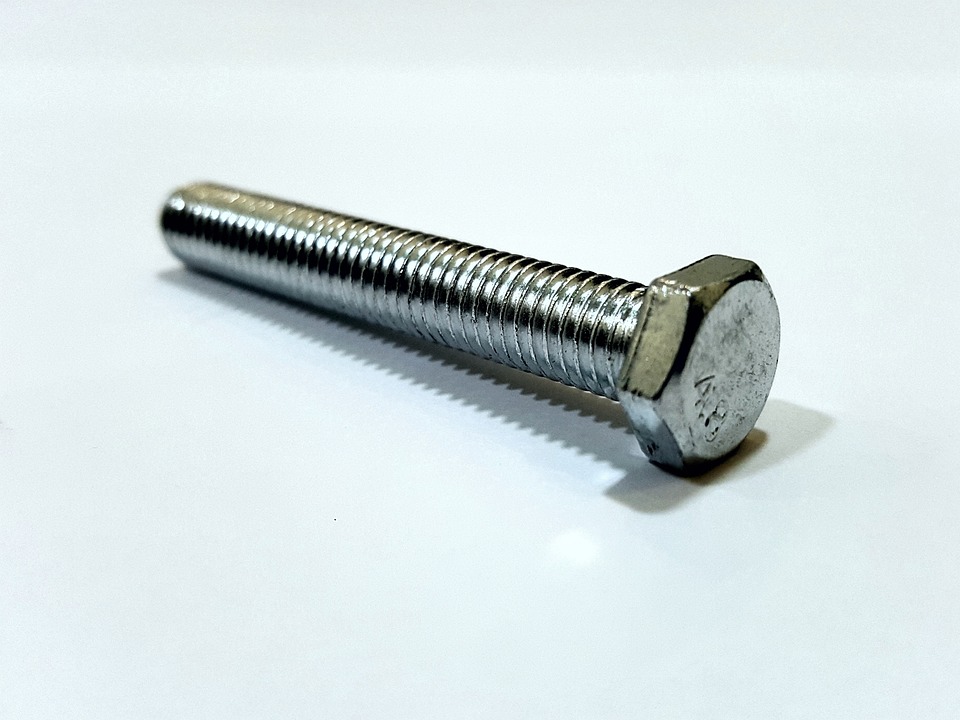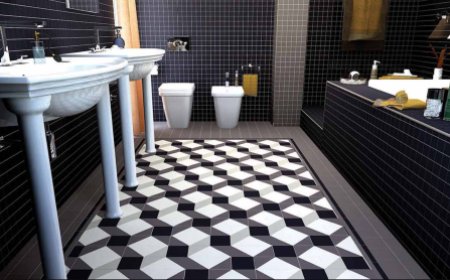How to Book a New Orleans Private Art Class
How to Book a New Orleans Private Art Class New Orleans is more than a city of jazz, beignets, and Mardi Gras—it’s a living canvas where culture, history, and creativity converge. From the pastel facades of the French Quarter to the lush greenery of City Park, the city offers an unparalleled backdrop for artistic expression. For travelers, locals, and art enthusiasts alike, booking a private art c
How to Book a New Orleans Private Art Class
New Orleans is more than a city of jazz, beignets, and Mardi Gras—it’s a living canvas where culture, history, and creativity converge. From the pastel facades of the French Quarter to the lush greenery of City Park, the city offers an unparalleled backdrop for artistic expression. For travelers, locals, and art enthusiasts alike, booking a private art class in New Orleans is not just a leisure activity—it’s an immersive way to connect with the soul of the city through paint, charcoal, and brushstroke.
Unlike group workshops or generic tours, a private art class provides personalized instruction, flexible scheduling, and the freedom to explore your own creative vision in a setting that inspires. Whether you’re a beginner learning to sketch the iconic St. Louis Cathedral or an experienced artist seeking to refine your technique under the guidance of a local master, a private class transforms sightseeing into self-expression.
This guide walks you through every step of booking a New Orleans private art class—from identifying your goals and researching instructors to securing your session and maximizing your experience. You’ll discover best practices, essential tools, real-world examples, and answers to common questions—all designed to help you create a meaningful, memorable, and artistically enriching journey.
Step-by-Step Guide
Define Your Artistic Goals and Preferences
Before you begin searching for instructors or venues, take time to reflect on what you hope to achieve. Are you looking to learn a specific medium—oil painting, watercolor, charcoal sketching, or mixed media? Do you want to focus on landscape, portrait, abstract, or street art inspired by New Orleans’ vibrant neighborhoods? Consider your skill level: Are you completely new to art, or do you have prior experience you’d like to build upon?
Also think about your preferred environment. Do you want to paint outdoors in Jackson Square with the bustle of street performers as your backdrop? Or would you prefer the quiet, controlled lighting of a studio in the Marigny? Some artists thrive in the energy of the French Quarter; others find peace in the shaded courtyards of the Garden District. Clarifying these preferences will help you narrow your options and ensure your instructor matches your vision.
Research Local Art Instructors and Studios
New Orleans is home to a thriving community of professional artists who offer private lessons. Start your search with platforms like Airbnb Experiences, Etsy, and local art association directories. Many instructors maintain personal websites or Instagram profiles showcasing their work, teaching style, and client testimonials.
Look for instructors who specialize in the medium and subject matter you’re interested in. For example, if you want to capture the ornate ironwork of New Orleans balconies, seek out an artist known for architectural sketching. If you’re drawn to the city’s Creole heritage, find someone who incorporates cultural motifs into their teaching.
Pay attention to reviews that mention clarity of instruction, adaptability to skill level, and the quality of materials provided. A great instructor doesn’t just demonstrate technique—they inspire confidence and encourage experimentation.
Check Availability and Scheduling Flexibility
Private art classes are often scheduled around the instructor’s other commitments, so availability can be limited—especially during peak tourist seasons like Mardi Gras, Jazz Fest, or the holiday period. Start your search at least 4–6 weeks in advance to secure your preferred date and time.
Many artists offer morning or late afternoon sessions to avoid the midday heat, which is especially important if your class will be held outdoors. Some instructors also accommodate early morning or evening sessions for travelers with tight itineraries.
When contacting potential instructors, ask about their cancellation policy, rescheduling options, and whether they offer multi-session packages. This is particularly useful if you plan to stay in New Orleans for more than a few days and want to build on your skills progressively.
Confirm Class Details and Logistics
Once you’ve selected an instructor, confirm the following details in writing:
- Duration of the class (typically 2–4 hours)
- Meeting location (studio, public park, historic site, or your accommodation)
- Materials provided (e.g., canvases, paints, brushes, aprons)
- What you need to bring (e.g., comfortable clothing, sunscreen, water, a sketchbook)
- Payment method and deposit requirements
- Weather contingency plan (for outdoor sessions)
Some instructors include a small keepsake—like a printed photo of your finished piece or a digital copy of your artwork—as a parting gift. Don’t hesitate to ask if this is included; it’s a thoughtful touch that enhances the experience.
Book and Confirm Your Session
Most private art classes are booked through direct email, messaging platforms, or online booking systems. Avoid third-party aggregators that charge excessive fees or lack transparency. Opt for direct booking with the artist whenever possible—it ensures better communication and often more personalized service.
After booking, you should receive a confirmation email with all the details. Save this to your phone and print a copy if traveling. If you haven’t received confirmation within 24 hours, follow up politely. A professional instructor will respond promptly and appreciate your attention to detail.
Prepare for Your Class
On the day of your class, arrive 5–10 minutes early. Dress comfortably in clothes you don’t mind getting paint on—even if the instructor provides aprons, accidents happen. Bring a reusable water bottle, sunscreen, and a hat if you’re painting outdoors. A small notebook or journal can help you jot down tips or ideas for future projects.
If you’re staying at a hotel, ask the front desk for directions or a map to the meeting point. Many New Orleans art studios are located in historic buildings with non-standard addresses, so having a screenshot of the location on your phone is helpful.
Engage and Learn During the Session
During your class, be open to feedback and willing to try new techniques. Don’t worry about creating a “perfect” piece—focus on the process. Your instructor is there to guide you, not to judge you. Ask questions: Why use a certain brush? How do you mix that color? What’s the story behind this style?
Many instructors will share anecdotes about New Orleans’ art scene, local history, or their own journey as artists. These stories deepen your connection to the city and make the experience more than just a lesson—it becomes a cultural exchange.
Follow Up and Preserve Your Experience
After your class, send a brief thank-you note to your instructor. A simple message expressing appreciation goes a long way and may open the door to future sessions or recommendations.
Consider sharing your artwork on social media with a tag to the artist’s profile (if permitted). This supports their work and helps others discover these unique experiences. If you’re proud of your piece, frame it or scan it to create a digital portfolio. Your New Orleans art class isn’t just a memory—it’s the beginning of a creative habit.
Best Practices
Choose an Instructor Who Aligns With Your Learning Style
Not all art teachers teach the same way. Some are highly structured, guiding you through step-by-step techniques. Others are more intuitive, encouraging freeform expression. Determine which approach suits you best. If you’re a visual learner, look for someone who demonstrates clearly and uses references. If you’re more hands-on, seek an instructor who lets you dive in and corrects as you go.
Book During Off-Peak Times for Better Rates and Availability
While spring and fall are ideal for weather, they’re also the busiest for tourism. Consider booking during late fall (November) or early spring (March), when crowds thin out and instructors may offer discounts for longer sessions or multi-class packages. Weekdays are often less booked than weekends, giving you more flexibility and potentially lower rates.
Request a Customized Theme or Location
Many instructors welcome requests for themed sessions: “Paint the French Market at sunrise,” “Capture the ghosts of the Garden District,” or “Create a jazz-inspired abstract.” Don’t be afraid to propose a unique idea. Artists in New Orleans thrive on creativity, and a personalized theme can turn a standard class into an unforgettable experience.
Bring a Travel-Friendly Art Kit for Independent Practice
Even if materials are provided during the class, consider bringing a compact watercolor set, a sketchbook, and a few fine-tip pens. These allow you to practice on your own—while waiting for a table at Commander’s Palace, on the St. Charles streetcar, or in the quiet of your hotel room. The more you practice, the more you’ll retain from your lesson.
Respect Local Culture and Environment
New Orleans is deeply rooted in tradition. If your class takes place in a historic district or near a sacred site, be mindful of noise, litter, and behavior. Avoid blocking sidewalks, respect private property, and ask permission before photographing locals or street performers. Artists here value authenticity—and so should you.
Plan for Weather and Seasonal Variations
Summer in New Orleans is hot and humid, with frequent afternoon thunderstorms. Autumn brings mild temperatures and golden light, ideal for outdoor painting. Winter is cool and rarely freezes, making it a quiet but beautiful time to create. Spring offers blooming magnolias and vibrant colors—perfect for plein air work. Always check the forecast and confirm with your instructor whether the session will proceed outdoors or move indoors.
Combine Your Art Class With Other Cultural Experiences
Extend your artistic journey by pairing your class with other New Orleans experiences. Visit the New Orleans Museum of Art before your lesson to study local artists. Take a walking tour of the street art in the Bywater. Attend a live jazz performance and sketch the musicians. These activities enrich your perspective and inform your artwork.
Document Your Progress
Take a photo of your first piece at the start of your session and another at the end. Compare them after a few weeks. You’ll likely be surprised at how much you’ve improved—even in a single afternoon. This reflection reinforces your growth and motivates you to continue creating long after you’ve left the city.
Tools and Resources
Recommended Online Platforms for Booking
Several platforms connect travelers with local artists in New Orleans:
- Airbnb Experiences – Offers curated private art classes with verified hosts, detailed descriptions, and secure booking. Filter by “Art & Craft” and “Private Lessons.”
- Etsy – Many New Orleans artists list private class vouchers as digital products. Search “New Orleans private art lesson” and read reviews carefully.
- Local Artist Directories – Visit the website of the New Orleans Arts Council or the Southern Graphics Council International for vetted instructor lists.
- Instagram – Search hashtags like
NewOrleansArtClass, #NOLAartist, or #PaintNewOrleans. Many artists post class updates and availability directly on their stories.
Essential Art Supplies to Bring or Purchase Locally
While most instructors provide materials, having your own basics ensures you’re ready to create beyond the class:
- Watercolor set – Compact and easy to carry. Brands like Winsor & Newton or Sakura Koi are ideal.
- Sketchbook with 100+ gsm paper – Thick enough to handle wet media without warping.
- Portable water container and brush cleaner – A small bottle with a cap works well.
- Collapsible stool or portable chair – Useful for outdoor sessions where seating isn’t provided.
- Weather-resistant case – Protects your supplies from humidity and rain.
If you forget something, don’t panic. New Orleans has excellent art supply stores:
- Artists’ Supply Company – Located in the French Quarter, offers a wide selection and knowledgeable staff.
- St. Charles Art Supply – A local favorite with affordable student packs and custom framing services.
- French Market Art & Craft – Great for unique, locally made brushes and handmade paper.
Apps and Digital Tools to Enhance Your Experience
Technology can support your artistic journey:
- Adobe Color – Use this app to extract color palettes from New Orleans’ buildings and use them in your work.
- Procreate (iPad) – If you’re digitally inclined, sketch on your tablet and compare your digital work with your traditional pieces.
- Google Arts & Culture – Explore virtual exhibits of New Orleans artists before your visit to understand the regional style.
- Google Maps – Save your class location, nearby cafes, and art galleries. Use the “Offline Maps” feature for areas with spotty service.
Books and References for Inspiration
Deepen your understanding of New Orleans art with these titles:
- New Orleans: A Visual History by Robert L. O’Meally
- The Art of New Orleans: Painting the City’s Soul by Lillian K. Smith
- Street Art of New Orleans by James R. Hines
- Watercolor Painting in the French Quarter by Marianne F. Delacroix
Many local bookstores, like Octavia Books or Garden District Book Shop, carry these titles and can recommend others based on your interests.
Real Examples
Example 1: A First-Time Painter’s Journey in Jackson Square
Sarah, a teacher from Chicago, visited New Orleans for her 40th birthday. She’d never painted before but wanted to do something meaningful. She booked a 3-hour private watercolor class with Elena, a local artist known for capturing the city’s architecture. They met at 8 a.m. in Jackson Square, just as the morning light hit the cathedral’s spires.
Elena taught Sarah how to mix the soft blues and yellows of the sky, how to use negative space to define the iron balconies, and how to capture the movement of the street musicians without over-detailing. By the end of the session, Sarah had a small, imperfect, but deeply personal painting of the cathedral with a violinist in the foreground.
She framed it and hung it above her desk. “It’s not a masterpiece,” she says, “but it’s the only thing I’ve ever painted that makes me feel like I was really there.”
Example 2: A Professional Artist’s Creative Retreat
James, a painter from Portland, spent two weeks in New Orleans on a sabbatical. He booked five private sessions with three different artists to explore new techniques. One session focused on oil glazing with a Gullah artist from the Bayou; another was a charcoal portrait class with a local muralist who specializes in jazz musicians.
He documented each session in a journal, noting how each instructor approached light, texture, and emotion. By the end, he’d created a series of 12 pieces titled “Echoes of the Mississippi,” which he later exhibited in a Portland gallery. “New Orleans didn’t just give me new techniques,” he wrote. “It gave me a new way of seeing.”
Example 3: A Family Art Experience in the Garden District
The Rodriguez family—parents and two teenagers—booked a 4-hour private class in a shaded courtyard of a historic home. The instructor, a mother of three herself, designed a collaborative project: each family member painted a different element of the same scene—the house, the magnolia tree, the wrought-iron gate, and the garden path. They worked side by side, laughing, mixing colors, and sharing stories.
At the end, they assembled their pieces into a single collage. “We’ve taken family photos,” says the mother, “but this is the only thing we’ve created together that we’ll keep forever.”
Example 4: A Solo Traveler’s Unexpected Connection
After a long flight, Marco, a digital designer from Berlin, felt disconnected. He booked a last-minute 2-hour sketching class in the Marigny, hoping to ground himself. His instructor, a retired art professor named Ms. Lila, didn’t teach technique—she taught observation. “Look at the way the light falls on that shutter,” she said. “That’s the rhythm of this city.”
By the end, Marco had sketched a single shutter. He didn’t finish the rest of the building. But he sat with it for an hour after class, just watching. “I hadn’t sat still like that in years,” he later emailed the instructor. “Thank you for teaching me how to see again.”
FAQs
How much does a private art class in New Orleans cost?
Prices vary based on instructor experience, duration, and materials included. Most 2-hour sessions range from $75 to $150. Longer or multi-session packages (3–5 hours) may cost $200–$400. Some instructors offer discounts for groups of two or more, or for booking multiple days in advance.
Do I need any prior art experience?
No. Private art classes in New Orleans are designed for all levels—from absolute beginners to advanced artists. Instructors tailor their approach to your skill level and goals. Many have taught children, retirees, and professionals alike.
Can I book a class if I’m traveling alone?
Absolutely. Many participants are solo travelers. Instructors are accustomed to working with individuals and often create a welcoming, low-pressure environment. You’ll likely leave with not just a painting, but a new friend.
Are classes offered in languages other than English?
Some instructors offer sessions in French, Spanish, or German, especially those who work with international students. Always confirm language preferences when booking. Even if the instructor doesn’t speak your language fluently, visual instruction is universal.
What happens if it rains during an outdoor class?
Most instructors have a backup plan. Classes may move indoors to a studio, a café with large windows, or a covered courtyard. If rescheduling isn’t possible, many will offer a partial refund or credit for a future session.
Can I gift a private art class to someone else?
Yes. Many artists offer printable or digital gift certificates. These make thoughtful, unique presents for birthdays, anniversaries, or travel enthusiasts. Be sure to include the instructor’s contact details and booking instructions.
How far in advance should I book?
For peak seasons (March–May, October–December), book 4–6 weeks ahead. For off-peak times, 1–2 weeks is usually sufficient. Last-minute bookings are sometimes possible, but options are limited.
Can I bring my own art supplies?
Yes, and many instructors encourage it. If you have a favorite brush or palette, bring it along. Just let your instructor know ahead of time so they can adjust their materials accordingly.
Is tipping expected?
Tipping is not required but greatly appreciated. If you had an exceptional experience, a 10–15% gratuity is customary, especially if the instructor went above and beyond—such as providing extra materials, extending the session, or offering follow-up advice.
Can I take photos or videos during the class?
Most instructors welcome photos of your artwork and the setting. However, always ask permission before recording or photographing the instructor or other participants. Some artists prefer to keep their teaching methods private.
Conclusion
Booking a private art class in New Orleans is more than an activity—it’s a portal into the city’s creative heartbeat. It transforms you from a visitor into a participant, from a spectator into a storyteller. Through the quiet focus of a brushstroke, the vibrant mix of pigments, and the shared silence of creation, you don’t just learn to paint—you learn to see.
The steps outlined in this guide—defining your goals, researching authentic instructors, preparing thoughtfully, and embracing the process—are not merely logistical. They are acts of intention. They signal that you’re not just passing through New Orleans. You’re engaging with it. You’re leaving a mark, however small, on its living art.
Whether you’re holding your first paintbrush or returning to your craft after decades, this experience will linger. The colors you mix, the lines you draw, the stories you hear—these become part of your own narrative. And when you return home, your painting won’t just hang on a wall. It will whisper: You were here. You felt it. You created.
So take the leap. Book the class. Bring your curiosity. Let New Orleans teach you how to see the world—not just with your eyes, but with your soul.




















